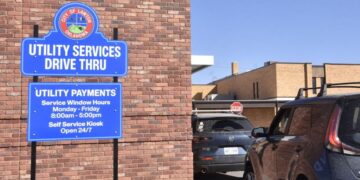The technical team with Westwin Elements has answered questions about the processes that will be used at its pilot plant in southwest Lawton to turn ore into refined nickel and cobalt.
Following is information provided via Daniel Smith, vice president of external affairs for Westwin Elements:
Q. Exactly how do you refine ore into a pure(r) form of cobalt or nickel, so it can be used on products?
A. The pilot plant in Lawton won’t be consuming ore right out of the ground. There are multiple phases of refinement that go on between mining and final product, and the pilot plant is right at the end of that processing line. The pilot plant is designed to consume predominantly mixed hydroxide product and high grade nickel matte. Both of these are considered intermediate products between mining and market ready nickel.
The plant uses the carbonyl process to extract the nickel from these intermediate products. High purity carbon monoxide reacts with nickel in order to form a gaseous nickel carbonyl (the scientific term is nickel tetracarbonyl as it takes 4 carbon monoxide molecules to react with each nickel molecule). The carbonyl reaction is highly selective for nickel so it is able to act as a purification method.
The nickel carbonyl gas floats up as the solid feed (mixed hydroxide product, high grade nickel matte) remains in the reactor.
The gas is then moved to a different vessel and heated up. When the carbonyl is heated, the carbon monoxide releases the nickel and the nickel goes from being a gas to a solid. This forms a very high purity (99.99%) nickel powder which can then be sold to the market (EV batteries, aviation companies, etc.) The same carbon monoxide that was used to react with the nickel is now available again to go and grab more nickel. This allows for the gas to be reused again and again.
Q. I would assume there is a waste product that is left from this process. What is that waste? And, did I understand you to say that there will be different amounts of waste, depending on whether nickel or cobalt is being refined?
A. After the carbonyl process, the elements that the carbon monoxide didn’t’ react with (essentially everything but nickel) is still there. That material hasn’t undergone any major chemical change up to this point; it’s more or less the same as when it arrived. This remaining compound or residue is then the feed (that is) put into the cobalt circuit. At the pilot plant scale, this material will be stored and handled offsite through a separate company.
Any process gas from the pilot plant that cannot be recycled will be put through a thermal oxidizer. This is a small stack with a natural gas flame in it that is ensures no carbon monoxide or nickel carbonyl can pass through it without being burnt off into carbon dioxide and pure nickel. The nickel dust will be captured in highly efficient (HEPA) filters in the stack.
Yes, there is different waste streams for nickel and for cobalt because they use different technologies to refine them. The current pilot under construction in Lawton is nickel specific.
The process doesn’t rely on a water-based step, so process water waste from the plant will mostly be from hygiene, equipment washdown, and cooling water.
Q. If there is some hazardous waste, what do you do with it? Are you talking a large amount that would have to be transported off site, or is it small enough amounts that it can be stored locally? If it can be stored, how exactly is that done? What form will it be in: solid or liquid?
A.The remaining material inside the reactor is the largest amount of expected waste, and this will be sealed and packaged on site and then sent to a separate company for them to consume. The residue from the carbonyl process is still considered a desirable feed. The material will be sampled, sealed and packaged on a batch by batch basis.
It is a small enough volume it will likely be 6-9 months between shipments of waste out of the pilot.
The form would be solid material.
The other potential hazardous waste from the plant would be a gas release of nickel carbonyl. Nickel carbonyl is a hazardous gas, and can cause detrimental health effects. The plant ventilation is controlled and monitored for this reason. It is not expected to effect areas outside of Westwin’s property as nickel carbonyl decomposes rapidly in open air.
Q. How will the materials get to and from the plant? Will any materials be stored outside, or will it all be inside?
A. For the pilot plant and initial commercialization, material will be brought in by truck, in industry standard supersacs, with full scale commercial likely utilizing a rail line. This is due to scaling costs where the pilot is quite small and it’s not feasible to build an addition rail spur until the size of the operation is large enough to justify it.
All feed and product for the operation will be stored inside. This is done to both maintain the quality of the product and avoid any fugitive dust emissions.
Q. What types of processes will the pilot plant/refinery contain to help head off any problems with the materials? What kind of guidelines will the government have to create (I’m thinking DEQ and EPA) for these processes?
A. I’m interpreting the first question as “what types of safety mechanisms are in place at the pilot to ensure a safe workplace.”
i. Process: Automated failsafe mechanisms for power outages and process upsets, extensive gas monitoring both inside pipes and in work environment, validation control checks through redundant instrumentation.
ii. Personnel: training in SCBA (self contained breathing apparatus), piped breathing air lines through the plant, nickel exposure urine analysis.
Westwin looks forward to working with both the DEQ and EPA to craft guidelines regarding carbonyl refineries in the USA. We have significant experience with similar governing bodies both in Canada and the UK. A key benefit of carbonyl is the heavily reduced environmental footprint in comparison to other refining methods.
Want to reach a local audience and grow your business?
Our website is the perfect platform to connect with engaged readers in your local area.
Whether you're looking for banner ads, sponsored content, or custom promotions, we can tailor a package to meet your needs.
Contact us today to learn more about advertising opportunities!
CONTACT US NOW





